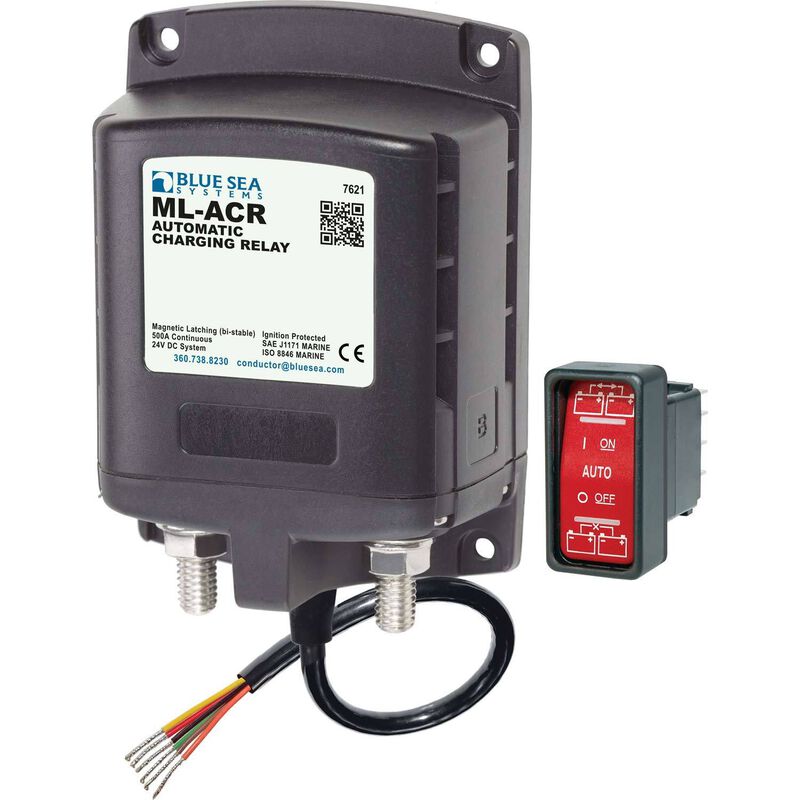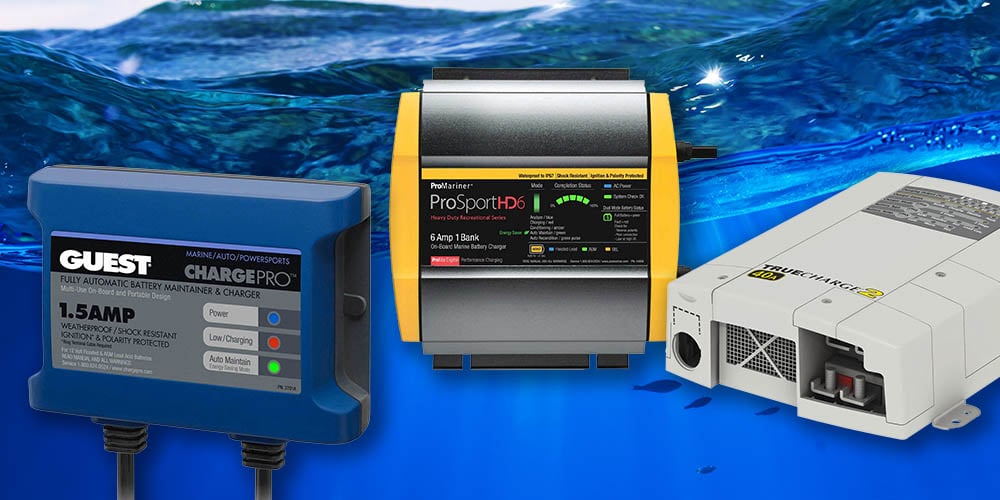ML-ACR Automatic Charging Relay, 500A 24VDC

500 Amp magnetic latching (bi-stable) Automatic Charging Relay will automatically combine batteries during charging and isolate batteries when discharging or when starting engine.
The ML-ACR (Magnetic Latch-Automatic Charging Relay) and ML-RBS (Remote Battery Switch, sold separately), when paired, provide complete battery management of large battery banks with the push of a button. In addition to automatically sharing the charge from an engine’s alternator between the start and auxiliary battery, the ML-ACR control switch combines batteries momentarily to assist with starting in the event an engine battery is low. With the optional Blue Sea Systems 9160 Paralleling Link Bus (sold separately), multiple remote battery switches can be easily connected to the ML-ACR for a complete remote battery management subsystem.
Outside of a complete ML-RBS system the ACR still combines two battery banks to charge them from a single source, and isolates each bank to prevent accidental discharge. The separation also protects sensitive circuits from spikes in current caused by engine starts. User can choose how the battery banks are isolated through the ACR. To save long cable runs and installation time the ACR is installed close to the batteries and a small gauge wire is run to control switch; heavy cable runs are shortened and reduce costs and weight. An included remote switch controls the ACR and requires as little as 20 AWG wire. Because each ACR is ignition protected, it can be installed on gasoline powered boats.
The ML-Series offers some additional control at the remote switch. The included Contura style switch allows the user to select ON, AUTO, and OFF: to combine the two banks in emergency situation, select automatic mode, and turn off or isolate the ACR. Users can set the system up for Start Isolation to isolate the house bank and protect sensitive electronics or Engine Isolation to isolate the engines to protect sensitive engine electronics.
Key Features
- Magnetic Latch (ML)—ACR draws very low current (<40mA to monitor terminal voltage) in the “ON” or “OFF” states, and draws moderate current for very short time when changing state
- Allows two battery banks to be efficiently charged from a single charging source without external regulators or isolators
- Dual sensing; senses charge in each battery bank
- Start Isolation or Engine Isolation allow uses to select bank to be isolated during current spikes to protect sensitive electronics or engine control systems
- Ignition protected; can be installed in engine rooms of gasoline powered boats
- Operated using remote switch; eliminates long heavy gauge cable runs
- Remote switch (included) provides emergency combine feature to start the engine or make a radio call
- LED indicators on switch designate mode of operation
- Does not offer a manual control lever
- Can be easily connected to ML series battery switches using link bus plates
- Lifetime warranty
ACR Specifications
- Nominal voltage: 24V
- Engine Isolation: Yes
- Amperage Operating Current:13mA
- Amperage Operating Current when changing state:<7.0A
- Live Current Switching: 300A @ 12V DC
- Continuous Rating: 500A
- Intermittent Rating: 700A
- Cable Size to Meet Rating: 4/0AWG x 2
- Terminal Stud Size: 3/8"
- Weight: 1 lbs
- Approvals:Meets ISO 8846 and SAE J1171 external ignition protection requirements, CE marked, Rated IP66
Relay Contact Position
- Combine 30 sec: 0V
- Combine 90 sec: 0V
- Open 10 sec:7V
- Open 30 sec:5V
- Open High: 2V

